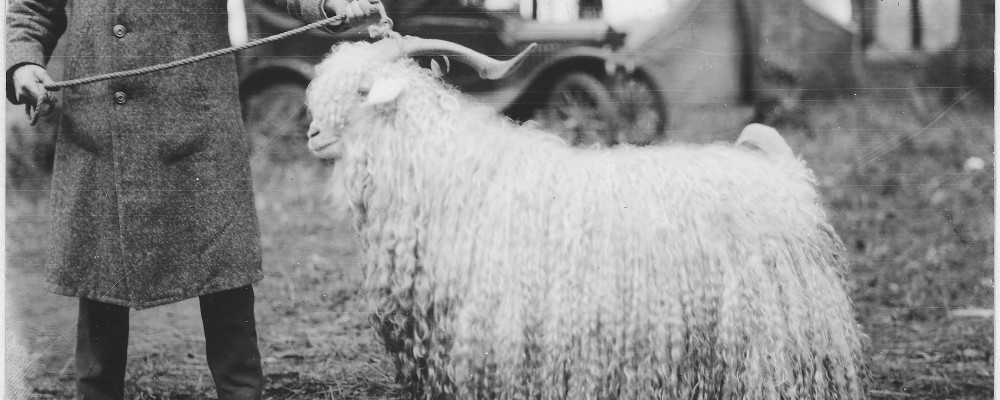
Series on Wool: What is Mohair?
Goat Mohair is one of the most luxuriously, soft and fluffy wools on the market. Find out more about where it's from and how it''s made.
What is Mohair?
Mohair is a fabric that comes from an Angora Goat. Don't get confused with "Angora" which I covered in my previous post! That angora fabric comes from the angora rabbit. Believe it or not, there is no relation between the two animals and despite the similar name, mohair and angora fibre are discernibly different. Find out more about angora (rabbits) from this post Series on Wool: Angora - Can it ever be ethical?
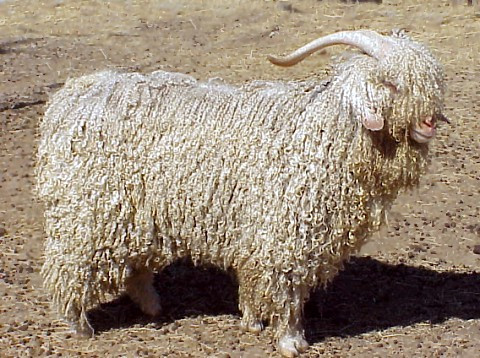
Goat Mohair, in my opinion, is one of the finest natural fibres on the market, with a rich history. “Mohair” comes from the Arabic term Muhayar meaning, “the fabric of goat hair” and likely referred to a commonly worn type of head cloth. Mohair has been used for centuries as fine fabric, since its first introduction to the West in the 16th century, when Charles V, a Roman Emporer, first bought angora goats from Europe.
Mohair goats are farmed only in areas of temperate summer and winter climates and currently Turkey, the U.S., South Africa, and the U.K. are the largest producers. By the time mohair makes its way to the wearer, it is often lined with silk or cotton and frequently mixed with sheep wool to minimise irritation that can result from contact with natural fibres. Mohair fabrics are generally used in pile form for sweaters, dresses, knitted garments, home furnishings and even socks!
#Mohair comes from the Arabic Muhayar: the fabric of #goat hair #Design #Designer

How is Mohair Fabric Made?
Mohair is a fine fabric and a rare supply, which makes mohair products luxurious items to own (even if they are from a goat!). The process of creating a finished fabric is lengthy and very similar to most sheep wool processing. First, Mohair is shorn from the angora goats twice a year and then scoured, or washed in a series of tubs where it looses close to 20% of its weight due to the oil and dirt that is removed. The fibres are then “carded”, or combed so they are in the same direction. This is done with machinery that passes the fabric through a series of rollers, as demonstrated in this photo below.
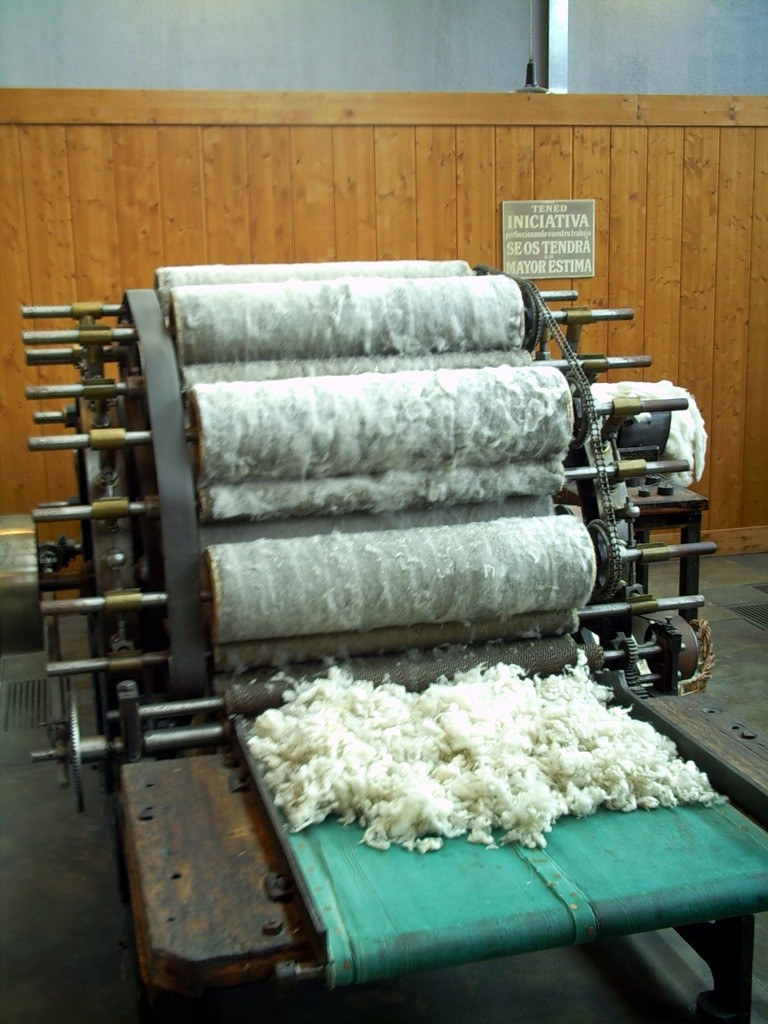
After a few more refining steps, the mohair is finally spun where in its essence, the fabric is twisted into different sizes of yarn. This yarn, then can be woven, knitted, or crocheted to make the textile of your choice.
It is worth noting that one of mohair’s most desirable qualities, for a designer that is, is how easily it is dyed. This process can occur after the scouring process, making it “stock-dried mohair,” after spinning “yarn dyed”, or after weaving, “piece dyed”.
#Mohair is perfect for dyeing. #Learning #Design

Characteristics of Mohair
Mohair is very lustrous, long and incredibly resilient even for how lightweight it feels. Its natural colours range from grey or silver, to a cream, brown or black. I particularly love products made from their natural colours - it really taps into the Scandinavian trend.
Mohair is known for its strength and texture which ranges depending on the age of the goat. As the goat ages, the fleece is progressively coarser and more difficult to break; whereas kids (baby goats) produce the finest and softest fibres. The three classes of the fibre are roughly: kid, young adult, and adult. Kid mohair is used for making socks, and older adult mohair would usually be limited to home furnishings such as rugs.
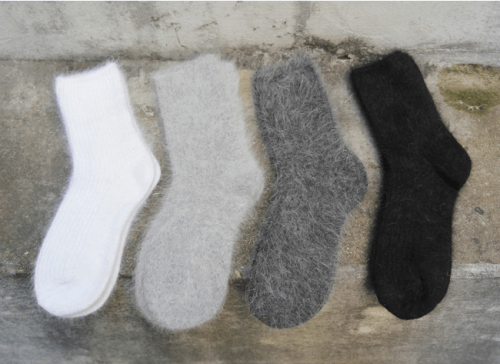
Wool can be very similar in composition, as it is made of the same keratin protein. However, the outer layer of the mohair has scales that are flat which allows for the surface of the mohair to be unbelievably smooth to the touch. Like wool, mohair absorbs moisture well, which is why it can take away moisture from the skin of the wearer, and likewise readily absorbs dyes. Additionally, mohair is very insulating and a great choice for use in sweaters and other outerwear.
Larger Impacts of Mohair
Financially, Mohair is very costly due to its inherent natural qualities such as its softness, natural lustre and strength, as well as its limited availability. The limited climate in which angora goats can thrive means a limited number of countries are able to produce and sell their fleece. Mohair, I have seen, is a finer luxury product and the costs of such should be considered if you choose to incorporate it in your designs.
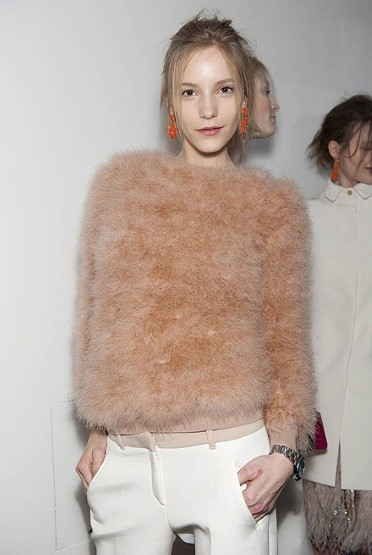
Environmentally, any type of farming can lend itself to questions and concerns regarding animals and their safety. For the most part, the goat fleece is shorn for the benefit of the goat whose coat must not grow too long, or it can affect the mobility and health of the animal. However, limiting animals to confined spaces has been linked with some negative health effects as well. You can read more about Angora Goat welfare in this article here.
Understanding the differences in fibres when they can be so closely related may seem redundant and repetitive, but even in my experience, an essential part of understanding your product is understanding what it is made of. I have seen that these are some of the qualities that separate exceptional designers from the rest.
If you like these articles, then please do sign up to our monthly newsletter, where I round up all the latest posts. I'd be really grateful if you'd please do show your support and tweet the article using the tweet buttons throughout the article and below.
The goat fleece is shorn for the benefit of the #goat. #FashionDesign #Mohair

#Mohair is very insulating - a great choice for use in sweaters and outerwear. #Goat #Fabric

#Mohair comes from an Angora Goat. Angora comes from an #Angora Rabbit. #Textiles

